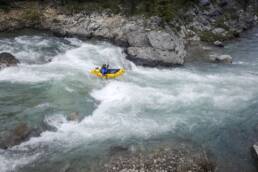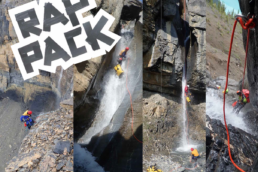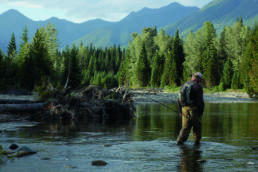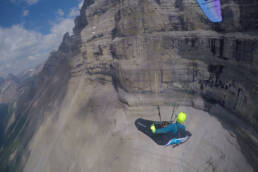Small inflatable boats are changing how backcountry explorers navigate the mountain range between British Columbia and Alberta. By Ray Schmidt
Packrafts are purpose-built, brightly coloured inner tubes wrapped in what can only be described as black bondage restraints. They’re the size of a one-person tent, weigh under four kilograms, and can easily be stowed in a backpack or on a bike rack. When you get to the water, all it takes is a few minutes of inflation into a one-way valve and the raft is ready for action. Some models even have spots inside the raft tubes where you can stow gear.
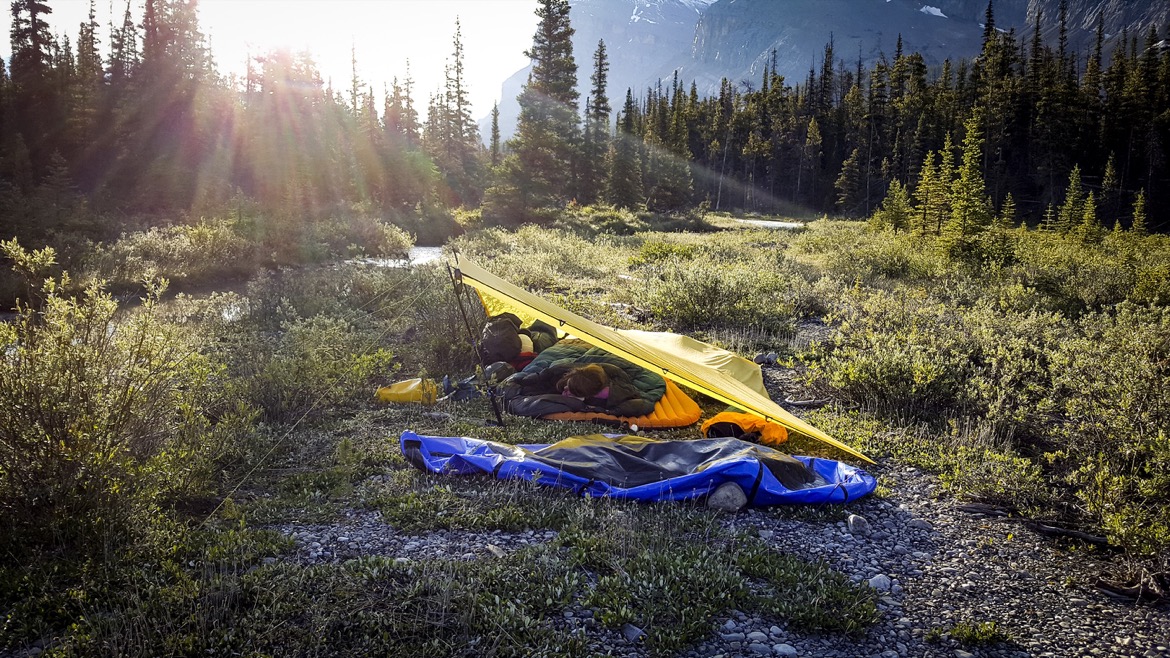
They have been around since the early 80s, when Alaskan adventure racers began crushing course records by skipping overland sections and floating rivers to the finish line on cheap inflatables, but they’ve improved over the years. In 2002, Sherri Tingley of Alpacka Raft in Alaska dramatically enhanced their design and durability by using nylon and urethane, ushering in the modern era of packrafting.
Adventurers are still exploring the limits of what a packraft can accomplish, and some have tackled wilderness rivers in the Kootenay Rockies to create link ups. Here is a list of five hike-accessible packrafting trips in the region that might convince you to join the pack.
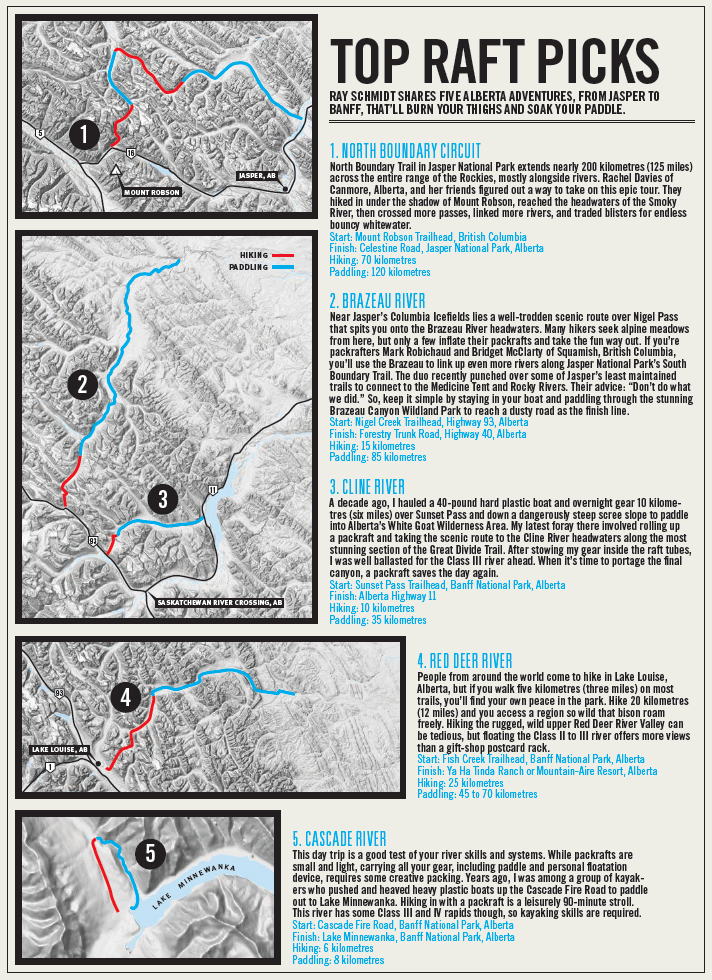
Raymond Schmidt
Although he has gutted a moose, burned a forest and owned a truck, Raymond Schmidt is not a redneck (we think) but a freelance writer from Canmore, Alberta.
Related Stories
The Best Whitewater in the Rockies
The winter of 2016-17 was indeed an epic. For kayakers, this spring is shaping up to be equally so. Here's a…
Everything Is Providence: Chad Sayers Checks In on the Rockies
Like an elfin, other worldly apparition in mid-summer's heat, Chad Sayers checks in on G3's new website with a…
How to be a Whitewater Paddling Superstar – Getting started
Simon Coward of Aquabatics in Calgary has taught hundreds of people how to get started whitewater paddling. So we asked…
What Is It Like Canyoning Off The Highest Mountain In the Rockies?
Alpine canyoning is a relatively new sport in Canada, but despite the dangers, which include hypothermia, rockfalls,…
Fly-Fishing in the East Kootenays
After a couple of bad breaks, an upstart East Kootenay angler learns the river's ropes and finds revival in the…
How One Man Broke a World Record Paragliding The Rockies
Talk about tales from the gripped. Paraglider Benjamin Jordan shares his first-hand reports from a record-breaking…


